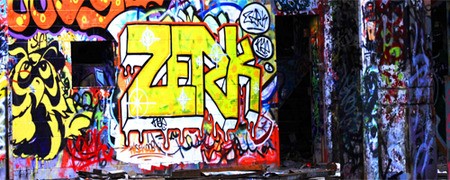"Almost every aspect of graffiti writing culture is fraught with contradictions, which is perhaps why it instigates so much debate," says Anna Waclawek, an affiliate professor and departmental coordinator for Concordia's Department of Art History.
There are times when the debate is muted, such as in 2008 when a London wall featuring a Banksy stencil was reportedly sold by the building's owner for more than $300,000. The work of Banksy and other prominent street artists such as Shepard Fairey, made famous by Barack Obama's 2008 Hope campaign posters, now formally appears on gallery walls and fetches high prices. Their kind of eye-catching street cred is something marketers relish.
In other words, while most people consider graffiti criminal, in another guise it can become an art form. Where, however, do we draw the line?


 Photos by Linda Rutenberg.
Photos by Linda Rutenberg.
 Photos by Linda Rutenberg.
Photos by Linda Rutenberg.